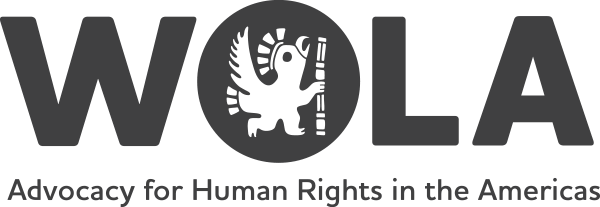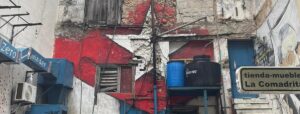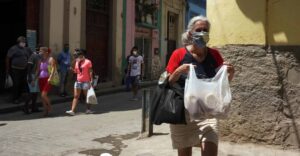In the context of the Pope’s upcoming trip to Cuba, and with the hope of dispelling commonly held misconceptions, WOLA has prepared what we hope will be useful background information on the history and current state of religion in Cuba. This is the second installment in a three-part series, and it shows how church-state relations have evolved since the Cuban Revolution. The first installment looks at the diversity and richness of Cuba's faith communities and the third shows how the Catholic Church and other faith groups are thriving and expanding their influence in Cuba, despite ongoing restrictions. This series has been prepared by WOLA’s Program Director Geoff Thale, who has studied religion in Cuba extensively.
The relationship between church and state in Cuba has improved dramatically since the early days of the Cuban Revolution. In fact, popular support for the movement to overthrow Cuban dictator Fulgencio Batisa included people from many religious traditions. Catholic social activists, youth groups, and priests were visible elements of the movement. But as the Cuban Revolution became increasingly framed in Cold War terms, many Catholics came to fear that the Castro government would suppress religion and religious activity. (Protestant churches took a much less oppositional approach to the Cuban government and had far fewer conflicts.) Favoring public education, the Cuban government shut down all private schools in 1961 (and most private schools were religious). Meanwhile, many priests and Catholic activists took leading roles in the opposition to the Castro government. Tensions grew; nearly one out of ten Catholic priests was expelled in the first years of the revolution. Many more became exiles, and it is estimated that 70 percent of Catholic priests left the country. A number of priests and Protestant ministers were imprisoned, and prejudice grew against religious believers. While the Cuban government did not formally close or seize churches, and neither religion nor religious practice was banned in Cuba, government officials remained suspicious of religious groups in the early 1960s.
Throughout this tense and conflict-ridden period, the churches in Cuba continued to exist. Though membership declined and the number of worshipers was reduced (mainline Protestant churches saw their congregations reduced by up to 50 percent), the Catholic Church maintained a functioning hierarchy and a number of open churches. Protestant churches continued to hold services, as did the three synagogues in Havana.
Church-state tensions eased considerably in the 1980s. Cuban President Fidel Castro, increasingly aware of the role that liberation theology was playing in Latin America, came to believe that religious faith was not incompatible with the fundamental tenets of the Cuban Revolution. In 1985 Castro met with Frei Betto, a Brazilian priest well-known for his support of liberation theology. The interview was published in 1985 and widely circulated. Shortly thereafter, Fidel Castro met with the Cuban Council of Churches, the leadership of the Protestant churches in Cuba. For their part, the Cuban Catholic bishops held a conference in 1986 at which they proclaimed a new willingness to dialogue with the state.
By the early 1990s a thaw in church-state relations was clearly visible. In 1992 the Cuban Communist Party revised its internal statutes, permitting religious believers to join the Party. Almost immediately, a number of Party members, including several prominent senior officials, began to publicly practice the Catholic faith that they had apparently maintained in private for many years. (Eusebio Leal, the Director of the Office of the City Historian of Havana and the architect of the restoration of Old Havana, is the best-known example.) That same year, the Cuban state constitution was revised and the description of Cuba as an “atheist state” was removed and replaced by the more neutral term “secular state.” In 1997 Christmas was made a legal holiday. Pope John Paul II visited Cuba in January 1998, celebrating four open-air Masses before thousands of people. In many ways the Papal visit underscored the degree to which church-state relations had improved since the early days of the Cuban Revolution.
Geoff Thale is WOLA’s Program Director. Mr. Thale has followed issues of religious freedom in Cuba since the time of Pope John Paul II’s visit in 1998—conducting research, bringing Cuban religious leaders and scholars to the United States on a number of occasions, organizing public events on church-state relations in Cuba, and participating in a delegation of religious leaders to Cuba. More recently, Mr. Thale met with officials of the Catholic, Protestant, and Jewish communities in Cuba to discuss the Pope’s trip.


